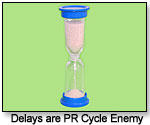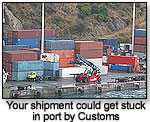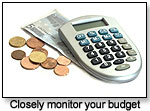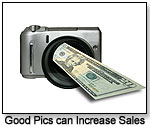
January 1, 2026

October 2011 | Vol. X - No. 10
Trial and Error - Are You Really Ready For PR? Part 2
Read Part I
 In the 17 years that I’ve been a toy publicist, I’ve learned a lot from the missteps, mistakes and troubles of clients, friends in the business, and those I’ve observed. For the benefit of those who read my first article, I decided to take a more in-depth look at some of the problems that can arise. Of course, I won’t name the companies or people involved to protect them; nonetheless, many things can be learned from their experiences.
In the 17 years that I’ve been a toy publicist, I’ve learned a lot from the missteps, mistakes and troubles of clients, friends in the business, and those I’ve observed. For the benefit of those who read my first article, I decided to take a more in-depth look at some of the problems that can arise. Of course, I won’t name the companies or people involved to protect them; nonetheless, many things can be learned from their experiences.
Dealing with Delays
I get many questions about delayed goods and how the delay can impact a company’s publicity opportunities. I had a client last year that was going back and forth with a Chinese factory on a design for a new product. Every time the factory shipped a new prototype (at great expense to the client in the U.S.), we were all dismayed to see a new mistake or problem each time, even if the last round of corrections had been made. A latch didn’t close properly, the design was printed upside down and backwards, the cardboard wasn’t the weight specified, etc.
 Instead of the factory meeting its own project deadline in April, it was well into July before the final design and prototype were approved for manufacture, and would be another 60 days before the shipment was expected to arrive in the U.S. Unfortunately, the annual deadlines for the Best Toy consideration of three national magazines were in June and July, so the client’s product was unable to be in the running. And, since the product did eventually debut later that year, it didn’t meet the launch date criteria required by these magazines to be considered the following year.
Instead of the factory meeting its own project deadline in April, it was well into July before the final design and prototype were approved for manufacture, and would be another 60 days before the shipment was expected to arrive in the U.S. Unfortunately, the annual deadlines for the Best Toy consideration of three national magazines were in June and July, so the client’s product was unable to be in the running. And, since the product did eventually debut later that year, it didn’t meet the launch date criteria required by these magazines to be considered the following year.
I’ve seen this same situation over the years repeated many times because of various manufacturing issues, but the deadlines only have a little wiggle room, and they always come earlier than we’d like. Unfortunately, the only solution to this problem is to get some early samples air freighted from overseas, or forego reaching out to media outlets with critical deadlines. In future years, if you want to have a shot at these magazines, make sure you have about a dozen samples in hand by early June.
 Cooperating with Customs
Cooperating with Customs
Even when the manufacturing and shipping schedules go according to plan, customs can delay a product’s arrival to store shelves and press outlets, sometimes significantly. If a company has been involved in a product recall in the past, it can expect current shipments to be flagged for additional inspection by customs. Companies with no recall issues also can be randomly selected for customs scrutiny, consuming precious weeks during which press deadlines can pass and sales are lost. There’s not much you can do if your shipment gets stuck in customs, except for communicate as much as possible with the customs officials you can track down. Impress upon them the extreme cost to your company with each day of delay, and try to determine if there are any issues you can immediately resolve to help expedite the inspection.
Satisfying Safety Requirements
The new safety tests required for toys and baby products can be another source of delay. I had a client who submitted their toy for testing. The testing company rejected several parts and identified them as being too sharp. My client suffered several valuable weeks’ delay while it redesigned the parts and recast their tools, all at great expense. The toy was resubmitted for testing, and while the newly designed parts passed this round, the testing company pointed out other parts of the toy as unsafe that had previously passed. Several months and thousands of dollars later, the toy passed the safety tests – but had missed many editorial deadlines.
Toy companies should try to bear in mind the target age range of the children they’re designing toys for, and avoid aspects of design they can anticipate might be a problem for this age group. In addition to sharp objects, an obvious example would be not to design parts that would fit in the mouth of babies or children younger than 3. If a company is new to the business and safety testing, they would be smart to partner with an experienced toy testing company and obtain their advice during design, well before submitting their first prototype for testing.
Figuring out Finance
 Under-capitalization or lack of credit can also cause delays that interfere with the critical timing of the annual toy PR cycle. Picture this scenario: a small or start-up toy company creates a blockbuster toy and introduces it to great fanfare at Toy Fair. Many great retailers write larger orders for the toy and expect its arrival for sale in a few short months. Best possible scene at Toy Fair for a new toy… or a terrible dilemma? The bigger the order, the bigger the deposit required by the manufacturer to begin production, and many small companies are not prepared to pay such a large sum. This dilemma has caused companies to scramble for an investor, create an unplanned partnership with the manufacturer to allow production to commence, or to secure a bank credit line or other financial arrangement. I’ve seen companies unable to make financial plans to meet the demand for their hot product and be unable to proceed. With credit lines tightening at banks even more during the past few years of the recession, I’ve seen this happen more and more. It’s heartbreaking!
Under-capitalization or lack of credit can also cause delays that interfere with the critical timing of the annual toy PR cycle. Picture this scenario: a small or start-up toy company creates a blockbuster toy and introduces it to great fanfare at Toy Fair. Many great retailers write larger orders for the toy and expect its arrival for sale in a few short months. Best possible scene at Toy Fair for a new toy… or a terrible dilemma? The bigger the order, the bigger the deposit required by the manufacturer to begin production, and many small companies are not prepared to pay such a large sum. This dilemma has caused companies to scramble for an investor, create an unplanned partnership with the manufacturer to allow production to commence, or to secure a bank credit line or other financial arrangement. I’ve seen companies unable to make financial plans to meet the demand for their hot product and be unable to proceed. With credit lines tightening at banks even more during the past few years of the recession, I’ve seen this happen more and more. It’s heartbreaking!
Before a new company even attends a critical toy show or meeting with an important buyer, they should plan for this “best/worst case scenario” by meeting with their bank early on to determine the bank’s appetite and ability to open credit lines and what collateral would be needed. Companies should also investigate factoring services and scout potential investors beforehand to determine what percent of the company they would expect in exchange for cash flow funds, and educate themselves about how either the factory and/or retailer might be able to assist the company in meeting financial challenges.
 Picture Perfect
Picture Perfect
Another critical tool start-ups often forget about but must address before they start their PR is to secure professional, hi resolution photographs of their product. Many have only lo-res, or computer graphic images (not photos), or neglected to get a white background for their images. Make sure to schedule a photo shoot early in your launch plan—usually prototypes will work. Photos do not have to cost you a fortune—there are plenty of local resources so check them out!
Learn more about photographing your products.
Presentation and Packaging
Packaging is another key item on your sales and PR success checklist. Many start-up companies begin by selling only on their own website, and they have not developed any packaging whatsoever. Or, their packaging is very minimal and does not compellingly convey the messages necessary to convince a consumer to buy. When they begin exhibiting at trade shows and start to work with sales reps or retailers, they suddenly realize they need to develop great retail packaging for their product. Many media and award programs will not accept products without packaging. I think most retailers and sales reps agree that the product itself has to be great, but the packaging can make or break a product at retail. To me, great packaging:
- Shows what’s inside (either with great photography or with a clear window, or both)
- Explains what the product is or does
- Tells the consumer who the product is intended for (and clearly marks the intended age range)
- Explains how it’s different or better than similar items
- Highlights any skills that are developed or benefits incurred by playing with the toy or game
Too often packaging becomes cluttered with too many messages and it’s difficult to quickly assess as a consumer what it is and why I have to have it.
See more tips on creating the perfect packaging here and here.
 Catching Copycats
Catching Copycats
Another terrible PR situation is when your client finds they have been copied. It’s especially bad when the copycat adopts a similar name, sometimes steals your client’s artwork or website design, or takes other measures that are really confusing to media you’ve been working with. Make sure your publicist knows about this development right away if it happens. Keep them informed of all the little nuances that are different about your company and product so these can be articulated to the press, while you defend your intellectual property on the legal front. If the competitor is actively seeking PR and sending out materials that look like yours, and a reporter doesn’t know the situation, they can become unknowing accomplices in helping promote the copycat.
Establish Yourself
Having issued these cautions, I have to warn you not to wait too long to toot your horn with PR. I’ve seen companies with patented and trademarked products and names that sold really well, but for whatever reason they hadn’t promoted their company and line in the press. A competitor can notice this gap in the press, create a very similar line that nudges right up to but doesn’t violate a patent, and begin touting itself in trade and consumer press very loudly. When the original speaks up and lets everyone know how long they’ve been in the marketplace, they look like the copycat simply because no one knew anything about them. Make sure to establish some press about your company and product early on so that when a copycat comes along, everyone can recognize them for what they truly are.
In all of these cases, a difficult situation was made even more frustrating by the PR clock ticking and racking up fees while the company has been unable to meet editorial opportunities. It’s important that companies try to anticipate and/or avoid these situations, and to be careful about when and how they engage a publicist. Somehow, thousands of companies do each year. When they do, and their product is innovative and well received, it’s a true joy to introduce them to families through the press with a successful PR campaign.
Copyright © 2026 TDmonthly®, a division of TOYDIRECTORY.com®,
Inc.



 In the 17 years that I’ve been a toy publicist, I’ve learned a lot from the missteps, mistakes and troubles of clients, friends in the business, and those I’ve observed. For the benefit of those who read my first article, I decided to take a more in-depth look at some of the problems that can arise. Of course, I won’t name the companies or people involved to protect them; nonetheless, many things can be learned from their experiences.
In the 17 years that I’ve been a toy publicist, I’ve learned a lot from the missteps, mistakes and troubles of clients, friends in the business, and those I’ve observed. For the benefit of those who read my first article, I decided to take a more in-depth look at some of the problems that can arise. Of course, I won’t name the companies or people involved to protect them; nonetheless, many things can be learned from their experiences. Instead of the factory meeting its own project deadline in April, it was well into July before the final design and prototype were approved for manufacture, and would be another 60 days before the shipment was expected to arrive in the U.S. Unfortunately, the annual deadlines for the Best Toy consideration of three national magazines were in June and July, so the client’s product was unable to be in the running. And, since the product did eventually debut later that year, it didn’t meet the launch date criteria required by these magazines to be considered the following year.
Instead of the factory meeting its own project deadline in April, it was well into July before the final design and prototype were approved for manufacture, and would be another 60 days before the shipment was expected to arrive in the U.S. Unfortunately, the annual deadlines for the Best Toy consideration of three national magazines were in June and July, so the client’s product was unable to be in the running. And, since the product did eventually debut later that year, it didn’t meet the launch date criteria required by these magazines to be considered the following year.  Cooperating with Customs
Cooperating with Customs Under-capitalization or lack of credit can also cause delays that interfere with the critical timing of the annual toy PR cycle. Picture this scenario: a small or start-up toy company creates a blockbuster toy and introduces it to great fanfare at Toy Fair. Many great retailers write larger orders for the toy and expect its arrival for sale in a few short months. Best possible scene at Toy Fair for a new toy… or a terrible dilemma? The bigger the order, the bigger the deposit required by the manufacturer to begin production, and many small companies are not prepared to pay such a large sum. This dilemma has caused companies to scramble for an investor, create an unplanned partnership with the manufacturer to allow production to commence, or to secure a bank credit line or other financial arrangement. I’ve seen companies unable to make financial plans to meet the demand for their hot product and be unable to proceed. With credit lines tightening at banks even more during the past few years of the recession, I’ve seen this happen more and more. It’s heartbreaking!
Under-capitalization or lack of credit can also cause delays that interfere with the critical timing of the annual toy PR cycle. Picture this scenario: a small or start-up toy company creates a blockbuster toy and introduces it to great fanfare at Toy Fair. Many great retailers write larger orders for the toy and expect its arrival for sale in a few short months. Best possible scene at Toy Fair for a new toy… or a terrible dilemma? The bigger the order, the bigger the deposit required by the manufacturer to begin production, and many small companies are not prepared to pay such a large sum. This dilemma has caused companies to scramble for an investor, create an unplanned partnership with the manufacturer to allow production to commence, or to secure a bank credit line or other financial arrangement. I’ve seen companies unable to make financial plans to meet the demand for their hot product and be unable to proceed. With credit lines tightening at banks even more during the past few years of the recession, I’ve seen this happen more and more. It’s heartbreaking!  Picture Perfect
Picture Perfect Catching Copycats
Catching Copycats